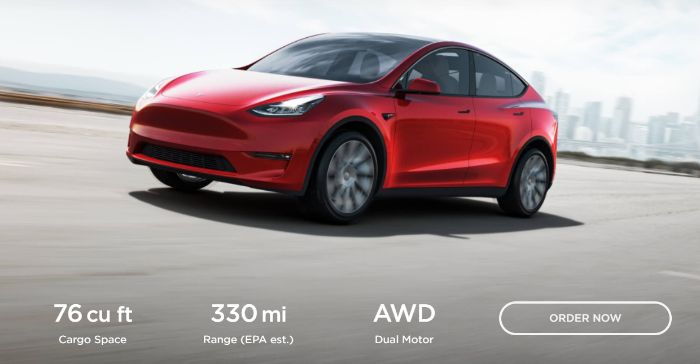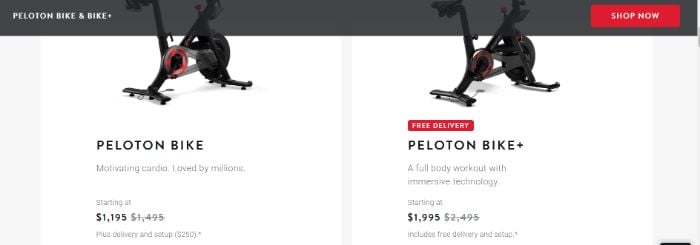According to the Harvard Business School, the greatest problem faced by companies when launching a new product is a total lack of preparation.
Because of this, up to 30,000 new products are launched every year—and at least 95 percent end in failure.
While products can fail for many reasons, a solid product marketing strategy can help to mitigate many risk factors and boost your success.
What Is Product Marketing?
Product marketing is the entire process of bringing a new product to market, from the research and development to the launch and beyond.
It’s used by companies of all sizes with the ultimate goal of understanding and filling customers’ product needs.
Whether you’re launching your first product or your fiftieth, a solid product marketing plan can be the thing you need to push your success over the edge.
Benefits of Product Marketing
The main benefit of product marketing is to increase sales. However, an effective product marketing strategy can have more benefits than “just” profit.
First and foremost, product marketing can help you to position your product in the market for successful targeting and less advert waste.
A proper strategy would answer questions like “what product gap needs to be filled?” and “how does my product stand out from the competition?”
With product marketing, you also gain a deeper understanding of your customer base.
- Who is your audience?
- What are they buying?
- What is their main reason for making a purchase?
By creating such buyer personas, you can increase your value proposition by up to 82 percent.
Then, to top it all off, you’ll get to unlock new insights about your competitors. While this isn’t often a huge concern for smaller businesses, up to 90 percent of Fortune 500 companies practice “competitive intelligence”—which has to say something for its value. If you want to grow, get ahead of your competitors while you still can.
Examples of Product Marketing
Before we get into our own strategies, let’s look at two brands with successful product marketing campaigns.
1. Poo Pourri
Poo Pourri is a great example of a brand that executed product marketing for an otherwise embarrassing and taboo subject (a toilet spray that eliminates the unpleasant odors associated with the bathroom.) It does so with humor and relatability because, after all, everybody poops.
They positioned their product perfectly.
Their first-ever video advertisement not only ranked as the number five most-watched video on the platform in 2013, but it also gained the brand a cult following that has continued to grow over the years.

How can other brands, even those with less taboo products, learn from Poo Pourri’s success?
First and foremost, find your platform and go hard. Poo Pourri used video advertising in its early years to continue to grow its following. This included television and online advertising where the brand was able to push the envelope with humor.
The brand also used customer personas to its advantage. It’s true, everybody poops. However, not everyone feels the need for a toilet spray.
Instead, their advertisements targeted certain markets and situations to really drive their point home.
2. Tesla
When you think of Tesla, what comes to mind? Electric cars. Clean energy. Solar power.
Your mental alignment of Tesla with these keywords and others in the clean energy space is for one simple reason: they built their entire identity, including each product marketing strategy, around their brand statement.
Just a snippet of Tesla’s brand statement is as follows:
“Tesla builds not only all-electric vehicles but also infinitely scalable clean energy generation and storage products. Tesla believes the faster the world stops relying on fossil fuels and moves towards a zero-emission future, the better.”

Tesla effectively cornered the electric vehicle market. It knew it had a target audience in the space, of course, but it never swayed from its brand statement when developing electric vehicles and other clean energy products.
What has that success looked like? Tesla currently boasts about 75 percent of the electric car market share with its Model 3 being the best-selling vehicle worldwide in 2021.
6 Product Marketing Strategies to Grow Your Business
If you’re excited to be a success story like the examples above, then consider these six product marketing strategies.
1. Pair With Robust Content Marketing
Did you ever think your product was too “boring” for content marketing to have an impact? Think again!
Blendtec, a seller of residential and commercial blenders, launched a series of videos aimed at making their boring product fun. The series was called “Will It Blend?,” and it’s just what it sounds like.
The company would test blend various inedible items in their blenders as a way to inject curiosity and humor into their product line.

The result? A 700 percent increase in sales over its first three years.
While your content marketing strategy doesn’t have to be quite so outlandish, it can be just as successful. There are plenty of content types to include in your strategy, including:
- blog posts
- videos
- podcasts
- infographics
- white papers
- downloadable guides
You just need to ensure your content marketing is compelling.
- First, understand what your customers need.
- Second, push on their pain points.
- Agitate that pain through storytelling.
- Offer to solve their problem.
As long as you touch those four points, your content marketing strategy will be off to a strong start.
2. Develop a Product Launch Plan
Product launches don’t always go as planned.
According to Gartner, 45 percent of product launches are delayed by at least one month. This can lead to a domino effect of poor results.
While this is a bitter pill to swallow, it’s also one that should give you sufficient motivation to invest time in a clear and detailed product marketing plan.
It needs to be effective, on time, and successful, and consider these three stages:
- Pre-launch.
- Launch.
- Post-launch.
Pre-launch is heavily focused on research and development. Consider what your industry is like, who your customers are, and what your product can offer that nothing else can.
This stage will also require heavy involvement with beta testing and finessing your messaging to the target audience.
- What unexpected pain points come up during beta?
- What is the feedback like?
- What can you improve in your product or messaging?
Launch is all about getting the message out to the right audience. This means choosing the best channels to reach your target market and even hosting multiple online and in-person events to generate a buzz.
Finally, post-launch requires you to evaluate your targets versus actuals. Did you perform as well as you hoped? If not, why?
A poor initial launch isn’t a loss. It’s important not to lose momentum during post-launch and, eventually, shift your focus to retaining the customers you do have.
3. Retarget Your Existing Customers
Why?
Your existing customers will be your greatest source of revenue. With just a 5 percent increase in customer retention, you can increase company revenue by 25 percent to 95 percent.
While customer service plays a huge role in retention rates, there’s also the important step of retargeting your existing customers. That is, marketing directly to them to address their needs and invoke feelings of brand loyalty.
What does this look like?
A few ways to retarget existing customers include:
- Create custom ad campaigns for previous and existing customers. These should focus heavily on brand loyalty and customer satisfaction. What is it that keeps customers coming back? Capitalize on it.
- Build a retargeting email campaign for customers who haven’t purchased over various timeframes. Using segmentation, create different campaigns for customers who haven’t purchased over various periods of time (e.g., within the last 3 months, within the last 6 months, etc.)
- Bid more aggressively on retargeting campaigns. Consider that customers who previously converted are more likely to convert than new customers. This means you can afford to have a higher Cost Per Conversion (CPC) for retargeting campaigns.
Ultimately, the goal of your retargeting strategy is to remind customers why they purchased from you in the first place. Place heavy emphasis on their initial experience and the value your product offers.
4. Address Customer Pain Points
Consider that 63 percent of B2C consumers and 76 percent of B2B customers expect businesses to anticipate and address their needs. This is the true value of understanding your customers’ pain points and addressing them with your products and services.
Pain is an important part of any marketing strategy, but one that can often be overlooked in e-commerce. Here’s why pain is so important:
- Pain can help move a customer to action.
- Pain can create a sense of relief in a customer.
- Pain can tighten the conversion funnel.
- Pain can improve conversion rates.
As mentioned in the content marketing section, the key to a successful product marketing strategy is to identify your customer’s pain, remind them of the pain, and then show them the solution to their pain.
These insights come from a robust market research strategy which includes keyword research, competitor reviews analysis, and customer surveys.
Take Qdoba, for example. They know that additional charges for popular add-ons, like guacamole or queso, are a pain point for their customer base. So, they don’t charge extra:

Pain points don’t stop with the purchase of your product, though. You should also have a plan in place for when your customers experience pain as part of the usual customer service journey. For example, an issue with the product.
This includes monitoring customer reviews, offering live chats with customer service agents, and reading through the results of customer surveys.
5. Reevaluate and Improve Product Positioning
Just because you’ve launched your product, it doesn’t mean you need to stick with previously chosen markets and marketing tactics. In fact, launch may have shown you a new possible market for your product or even a unique value proposition.
Pre-launch, you and your product team would have answered the following questions:
- Why was this product made?
- Who is this product made for?
- What challenges does this product resolve?
- What makes this product unique?
Post-launch, it’s time to consider whether the answers you and your team came up with held true. If not, what do the new answers look like and how do they differ from the original plan?
That difference can give you a whole new idea for repositioning your product in the ever-changing market.
When you reposition and how you do so is highly dependent on the product and costs involved. A few examples of repositioning a non-profiting product include repackaging, remarketing it to a different audience, or even adding new features.
Fortunately, you have the value of customer insights and their feedback—which wouldn’t have been available to you during the initial product launch. Use this to implement a full product positioning strategy.
6. Consider a Change to Your Pricing Structure
Another way to reposition your product is to consider a change to your pricing structure. This is helpful if you’re seeing less-than-profitable returns on your product.
A change to your pricing can be as simple as lowering (or increasing) your price or running exclusive promotions.
You can also follow the likes of Peloton and hundreds of other companies who successfully implemented the “good-better-best” approach to pricing.
In short, the good-better-best pricing strategy involves three tiers of the same product with increasing value. This enables you to make your product more accessible to new customers while also increasing spending for those customers who want more.

To continue with the Peloton example, there are four options to choose from:
- The Peloton Bike (starting at $1,195).
- The Peloton Bike+ (starting at $1,995).
- The Peloton Tread (starting at $2,345).
- The Peloton Tread+ (starting at $4,295).
While the Peloton Bike and the Peloton Tread are unique products, they still offer one experience for the customer: a home workout device.
By offering your product at various price points, you open the product up to more customers. This can be a good step for companies hoping to break into more markets.
Product Marketing Frequently Asked Questions
What are the four types of products?
There are four product classifications, all of which can benefit from product marketing. They are convenience goods, shopping goods, specialty goods, and unsought goods.
What companies can benefit from product marketing?
If you think your business can’t benefit from product marketing, you’d be wrong. Companies of any size and configuration can benefit from a planned approach to product launch and sales.
What are the types of product marketing?
There are over 20 marketing activities that can fall under product marketing. These include advertising, branding, product management, product development, sales, and promotion.
What is the difference between marketing and product marketing?
Product marketing is a subset of marketing. Marketing is a broader term encompassing activities like marketing communications, operations, and project management.
Product Marketing Strategies: Conclusion
From product development to customer analysis to launch, a product marketing strategy can ensure you hit all the milestones in a set timeline.
In turn, you can launch your product on time and increase your odds of success.
As long as you have a solid product marketing plan in place (one that mitigates risks and anticipates customer needs), you’ll be off to a better start than most companies.
Which product marketing strategy do you think will be most effective for your up-and-coming product launch?
from Neil Patel's Digital Marketing Blog https://ift.tt/hY2rvCQ

No comments:
Post a Comment